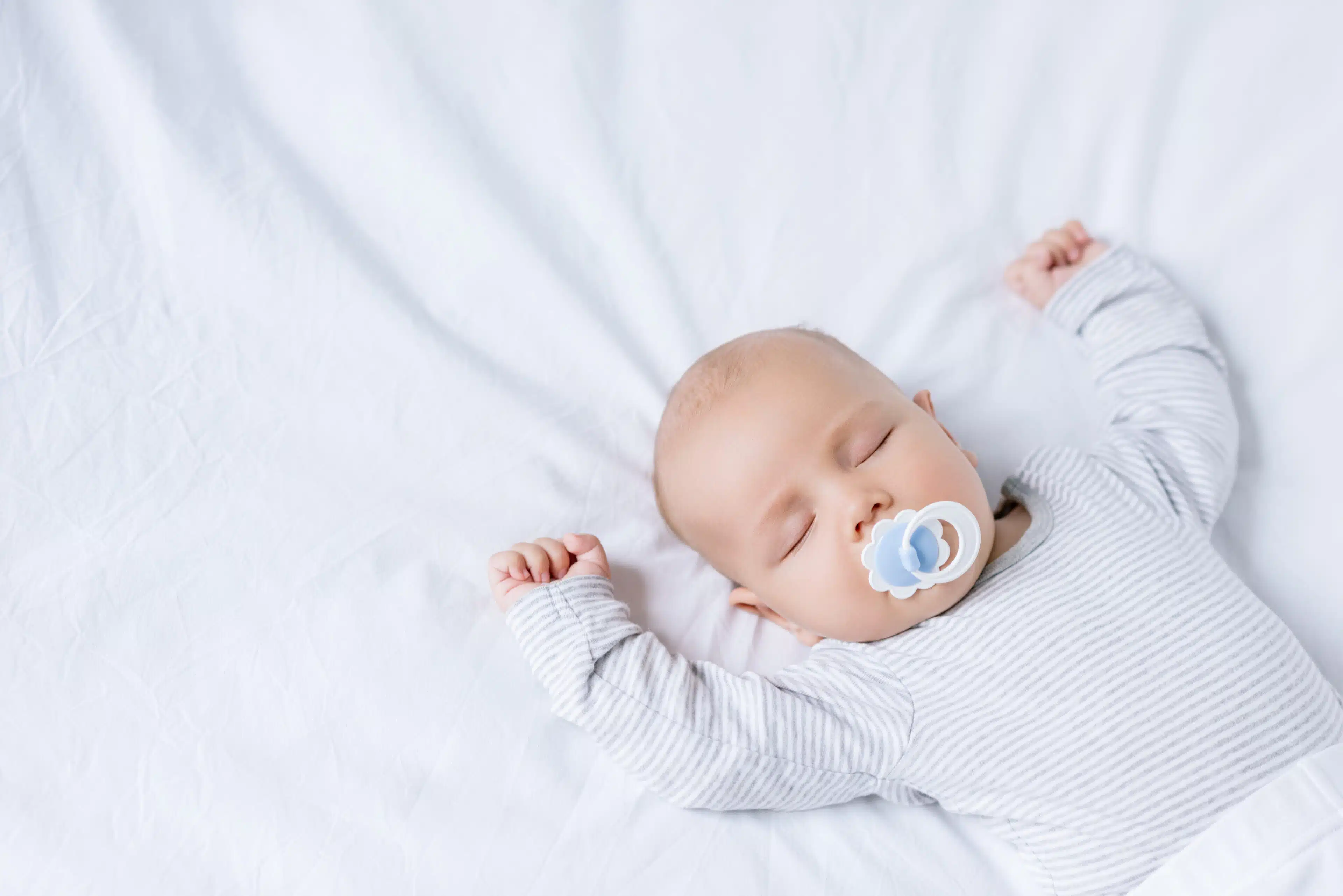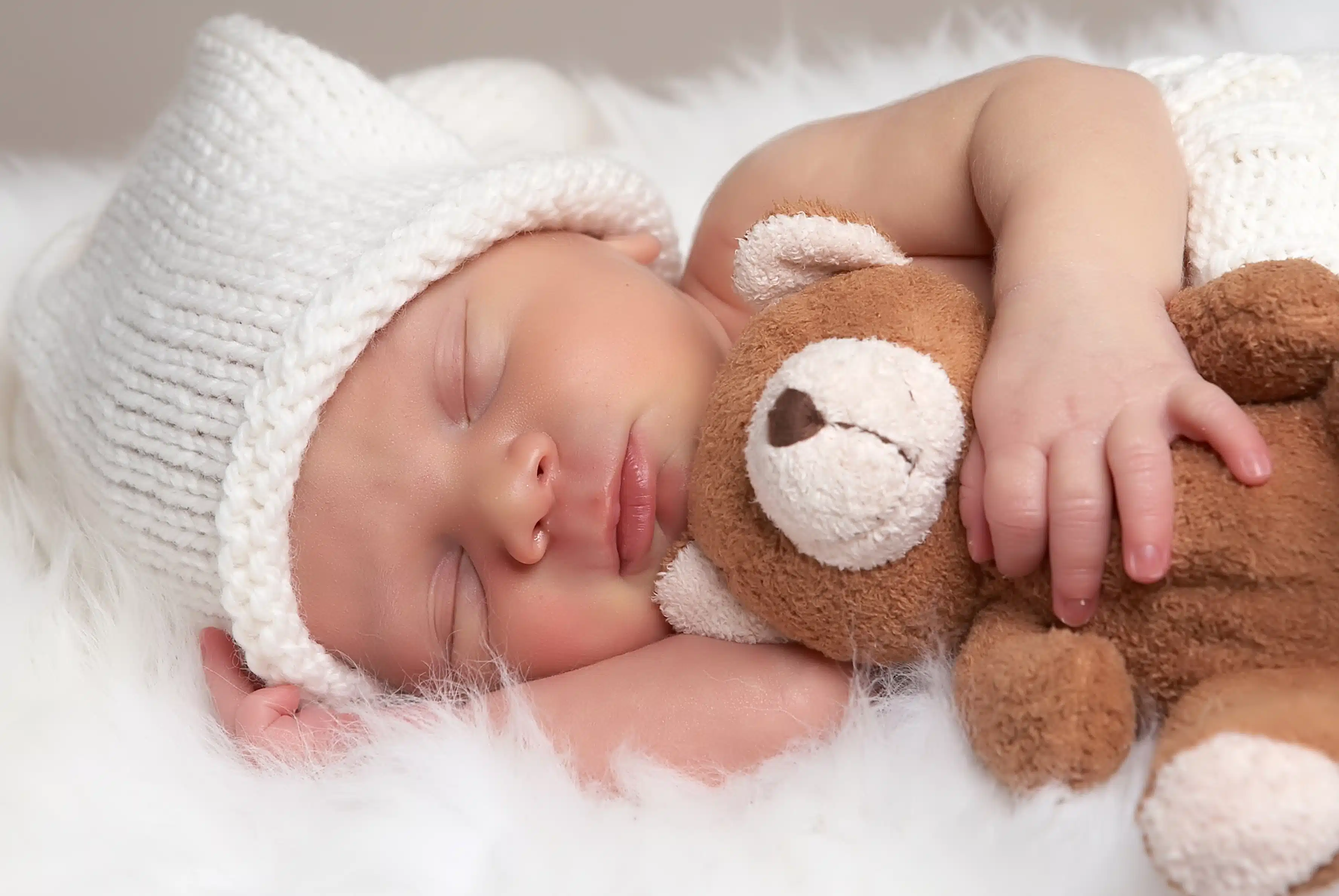You found the perfect crib and the cutest crib decor. Grandma hand-crocheted a comfy blanket, and your best friend found the most adorable lovey. Your baby is all set for a good night’s sleep, right? Not quite. Although your baby’s bed might look Pinterest-worthy, all of these “extras” in baby’s sleeping space are unnecessary. In fact, less is more when it comes to the crib — and the more minimalist your baby’s sleeping space, the better, according to the American Academy of Pediatrics.
Expert Sleep Recommendations
Creating a safe sleep environment for your baby is important, and it should be your top bedtime priority. But beyond creating a safe and comfortable space, there’s lots more to consider. The American Academy of Pediatrics (AAP) provides valuable guidelines to help parents ensure that their babies sleep soundly and safely. Here are some practical tips to help your baby get a good (and safe) night’s sleep.
Back to Sleep
The AAP recommends that babies be placed on their backs to sleep for every sleep time, including naps and at night. Sleeping on the back reduces the risk of Sudden Infant Death Syndrome (SIDS) and suffocation.
Use a Firm Mattress
Choose a firm mattress that fits snugly in the crib or bassinet. Firm means that the mattress should not indent when your baby is lying on it. Avoid using soft bedding, such as pillows, comforters and bumper pads, as they can create a suffocation hazard.
Keep it Bare
A clutter-free sleep environment is the safest for your baby. Your baby’s sleep space should be a mattress with a fitted sheet over it — and that’s it. Remove all toys, pillows, blankets and stuffed animals from the crib or bassinet. Dress your baby in a sleep sack or use a light, breathable sleep garment to keep them warm.
Sharing a Room is Best
The AAP recommends that infants sleep in the same room as their parents for at least the first six months, or ideally, for the first year. This has been shown to reduce the risk of SIDS. Consider using a bassinet or a co-sleeper that attaches securely to your bed for easy nighttime feedings and snuggles.
Say No to Sharing a Bed
While room-sharing is encouraged, bed-sharing is not. The AAP advises against sharing a bed with infants, because it increases the risk of suffocation and SIDS. It’s safest for your baby to have their own sleep space that’s close to you.
Avoid Overheating
Keep your baby’s sleep environment at a comfortable temperature. Dress them appropriately for the room temperature and avoid using heavy blankets or overheating devices, such as heating pads or electric blankets. A room temperature between 68-72°F is ideal.
Be Consistent
It’s important to maintain safe sleep practices for every sleep, whether it’s naptime or bedtime. Consistency is key in creating a safe sleep routine for your baby.
Creating a safe sleeping space for your baby is an ongoing commitment. Stay informed about the AAP’s latest sleep safety recommendations on their website (aap.org/en/patient-care/safe-sleep) and follow your pediatrician’s advice. By using these guidelines from the AAP, you can rest easier knowing that you’re doing everything you can to ensure your little one sleeps safe and sound.







